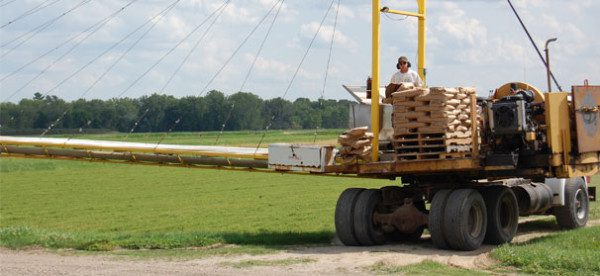

Dec 31, 2012Wisconsin cranberry grower favors fresh market
Habelman Bros. Cranberry Co. in Tomah, Wis., is one of but a few fresh-market cranberry growers in the United States. In fact, less than 4 percent of the total cranberries grown in the country are bound for the fresh market.
It wasn’t always that way, said Ray Habelman, CEO and a member of the fourth generation to run the family farm.
“Look at any marsh that dates back decades, they all did fresh sales at one point,” Habelman said. “When the juices and other products started developing, growers switched because fresh-market cranberries are harder to harvest and store.”
Habelman cranberries are sold through most of the major grocery retailers, including Walmart, Safeway, Kroger and Costco, Hableman said. The majority of the fruit leaves Wisconsin, and quite a lot goes to Europe.
“The cranberries go by ship,” Habelman said. “That’s why you have to be sure you have really high-quality fruit. It can take a month from the time we pick to the time it arrives to the store shelf in Europe. Most of it gets repackaged once it gets there, too.”
The fresh market is a little flat, Habelman said, but there has been good growth in Europe. There is a great health message that goes along with fresh cranberries.
“I think the future for fruit looks really good,” he said. “I think people are starting to pay attention to what they eat. Cranberries have some benefits unique to them. The proanthocyanidins are through the roof. I’m not saying they are sweet, but they are healthy.”
Habelman farms on 700 total acres on three properties. There is a 250-acre farm in Tomah with a processing facility, a “home marsh” – the original farm, with an additional 50 acres – and a 300-acre farm in Millston, Wis., that also has a processing facility, Hableman said.
Finding adequate labor has not been much of a problem, he said.
“We carry 39 full-time employees,” Habelman said. “When we are harvesting and packaging, we’re just over 200 employees. All of our employees are local, too. We use no migrant workforce. Many see it as a second job. In Tomah, the turnover rate is low; 90 percent or more come back.”
Habelman Bros. started in 1907, when Ray’s great-grandfather, Edward, bought 13 acres. The Habelman Brothers name came from Edward’s sons, who took over and started expanding the business. Today, Ray runs the farm with his father and a second cousin. Ray started working at the farm full-time in 1997.
“The hope is my kids will take over and follow in my footsteps,” he said. “But you never know.
Growing cranberries
Cranberries need a proper-length growing season, and growers need cool nights, especially for quality. Good-quality sand or peat is required for the beds. The best pH level is in the 4.5 to 5 range. Growers have to apply sulfur to get the sand to the proper pH level, Habelman said.
Vine cuttings are laid out flat on the sand or peat beds, then disked into the sand a couple of inches. The cutting will sprout roots and take off, Habelman said.
Quality water is extremely important, but good drainage is necessary. The fruit can rot or the vine can be damaged if there isn’t good drainage. The biggest misconception about cranberries is that they grow in water. You only use water for harvesting and for freeze protection, he said.
“It needs to get cold in the fall, too,” he said. “That is what triggers the fruit to turn red and the vine to go dormant. We have to be able to flood the beds to protect the buds in December for next year. It takes 10 to 12 inches of water to protect them because you have to cover the whole vine. For harvesting, 6 to 8 inches of water is plenty.”
Once the cranberries are harvested, they are trucked to the facility where they are immediately dried and sorted, Habelman said.
Stevens is the most widely grown variety, accounting for 51 percent of the national crop and most of what Habelman grows. It was selected because it colors well and has good keeping quality. An early variety is Ben Lear. It ripens in mid-September. Those two varieties make up the majority of Habelman’s crop.
Cranberry plants will produce indefinitely. After 25 to 30 years, the yield starts to decline and they need to be replanted. New plantings don’t produce much for the first three to four years, he said.
Habelman pointed out that cranberries don’t self-pollinate well, and require a lot of bees.
“We get them in June or July, depending on the season, and get three to four colonies per acre,” he said. “We get a lot of honeybees and some bumblebees. We’ve been lucky, as we’ve had the same keepers for years. Some other growers aren’t so lucky. We’ve gotten the quality and quantity we need. Cranberries don’t make very good honey, though.”
By Derrek Sigler, Assistant Editor














